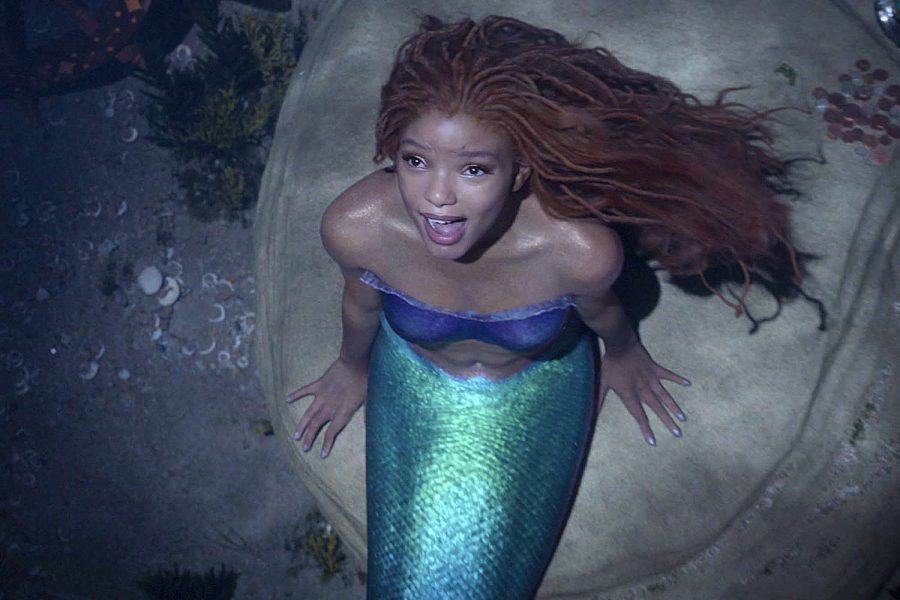The Ongoing Little Mermaid Live Action Debate
October 31, 2022
*The opinions expressed within the content are solely the author’s and do not reflect the opinions and beliefs of the website or its affiliates.*
The 2023 live-action remake of the film, “The Little Mermaid” has brought extreme controversy among the wide Disney fanbase. The main character, Ariel, is portrayed by a black actress named Halle Bailey. Much of the criticism stems from the fact that Bailey does not fit the image of the character that was portrayed by Disney back in the 1989 film. But aside from the fact that Ariel is supposed to be fair-skinned and have red hair, what is rooted in this vitriol?
Some critics of the movie believe that the “drastic difference” between the two Ariels will ruin many individuals’ childhood memories. Some even go on to say that, scientifically, it wouldn’t be possible for Ariel to be a black woman, as Ariel is Danish. The only motive hidden behind this disapproval of the live action is based on racism.
Another Disney film, “The Princess and the Frog,” is commonly used to compare scenarios in the Ariel argument. Critics are arguing that if Disney were to make a live-action version of “The Princess and the Frog,” using a white woman for the black main character, Tiana, would be the equivalent of Ariel being a black woman, but that this would upset many.
However, this change would be significantly more impactful and harmful considering that Tiana is based on a real woman named Leah Chase, who was an American Chef in New Orleans, Louisiana. Because Tiana was the first black princess in a Disney film, she serves as a major stepping stone in the Disney industry, especially compared to previous poor depictions of non-white characters in past films. Changing the race of Ariel does not affect the storyline of the film, whereas Tiana’s race is a key part of her film’s plot in its connection to her setting and community.
An actor and producer of the live-action remake, Lin-Manuel Miranda, is certain that “Halle Bailey is the perfect Ariel.” On his appearance on CNN Tonight, Miranda disclosed how he thinks he should not address and fight against the backlash but instead recognize the talent of the actress.
One of the biggest points of those who are against the live-action remake is that Ariel’s hair is not red enough, but this is again to mask racism. As can be seen in another Disney film “Cinderella,” the original 1950 film shows Cinderella with exaggerated, unnatural yellow hair. In the 2015 live-action remake, her hair is significantly less yellow, but no reaction from Disney’s audience was made, proving that it is not the color of the hair that bothers people but rather her race that causes this dismay.
Even though Disney has one of the largest age ranges for their audience, more focus should be put on the new generation and how films like the live action can impact them, specifically the younger audience. Videos across social media show a positive reaction to the live-action remake from children, shocked that such an iconic character could be the same race as them.
The majority of Disney movies are considered timeless classics because they are cherished and precious childhood memories. Those who believe that this affects their childhood should take a moment to consider the current and future generations and how important representation is to them. Disney does not disclude by age, but it is evident that the priority audience is children because of the strong effect storybook tales have on them during such developing periods of their lives. Nevertheless, adults and older teenagers criticize the film in advocacy of their own experiences rather than thinking of those of today’s children.
Out of the 12 Disney princesses, five of them are shown as non-white. The lack of representation in Disney films has been called out previously, and over time, they have been releasing films with better, increased portrayals of non-white characters. Even though “The Little Mermaid” live-action may play only a small role in improving representation, this should be viewed as a necessary step towards more diversity in Disney as a whole.
Bailey herself has spoken out against the harsh reactions and recognizes the aspect of inspiring children, “I know what it would’ve meant to be as a little girl to have been able to see a black Ariel,” Bailey said in a Youtube Q&A video she put out.
It is acceptable to cherish a memory of an iconic cartoon character like Ariel, and people can hang onto their ideal visions of Ariel. However, they should push aside personal worries to gain perspective on the overall impact if films like this continue to be released.





